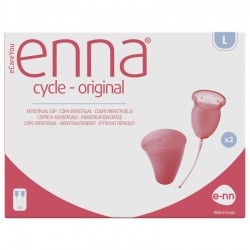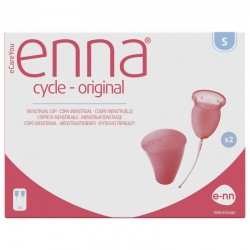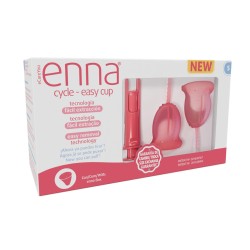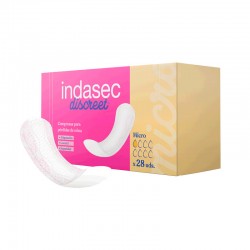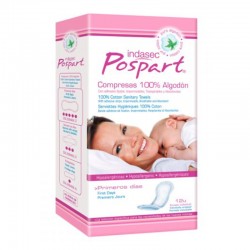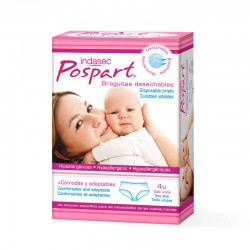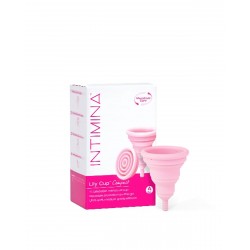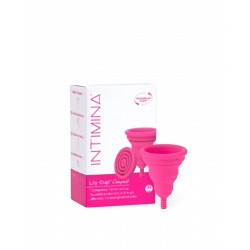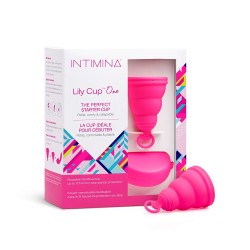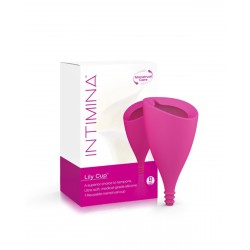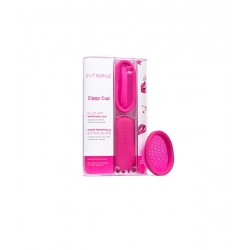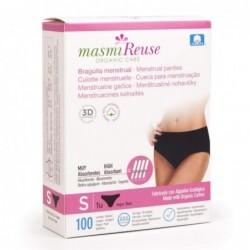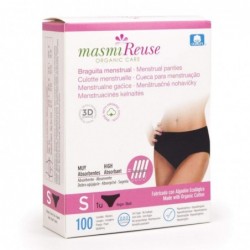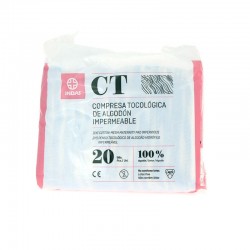Menstrual Cups
- -31.09%
The Menstrual Cup
Menstrual cups are reusable containers inserted into the vagina during menstruation to collect menstrual fluid. They are an eco-friendly alternative to conventional methods of menstrual bleeding control, such as tampons. Unlike tampons, which are also used internally, the menstrual cup does not absorb blood; it remains contained within the cup until it is removed from the vagina and the fluid is discarded.
The menstrual cup is a feminine hygiene product that has revolutionized the way women do their jobs. It's made of hypoallergenic materials and is chemical-free, so it doesn't cause any negative reactions in the body. It maintains vaginal moisture and doesn't dry it out, protecting the intimate flora at all times. In addition to being eco-friendly and reusable as often as you like (ensuring thorough care and maintenance of cleaning and disinfection), it has more autonomy than any other intimate hygiene product, lasting up to 12 hours without needing to take a shower (depending, of course, on menstrual flow and the day of your period). They're also ideal for places where you don't have easy access to a bathroom, such as the beach or the mountains.
According to users, the cup is also much more comfortable to wear, highlighting above all that you don't even notice you're wearing it, that you can wear it with any type of clothing without fear, and that it's invisible. This allows for natural movement both during sports and any other type of exercise or movement, such as getting in or out of a vehicle.
What Types of Menstrual Cups Are There?
At Farma2Go, we have a wide variety of menstrual cup sizes, which are divided into the following categories: Size S or small for women under 18 years of age who have not had sexual relations; Size M or medium; Size L or large; and Size XL or extra-large, which vary in diameter, length, and capacity. They can also be classified by letters corresponding to their size (A, B, etc.).
Is It Better to Use Pads, Tampons, or a Menstrual Cup?
No two women are the same, and each woman experiences menstruation differently. Therefore, the most important thing is to choose the menstrual control product that best suits her needs and with which she feels most comfortable. What's certain is that the menstrual cup is the best eco-friendly alternative to pads and tampons, as it collects menstrual flow instead of absorbing it, ensuring a completely odorless and irritation-free period. It's also very easy to clean and reuse: not only will you save money, but you'll also reduce your impact on the environment.
How to Use the Menstrual Cup?
Using a menstrual cup is very simple , and once you try it, you'll be delighted with its comfort. To begin, it's extremely important to wash your hands thoroughly with soap and water, assuming a comfortable position to relax your muscles. Next, insert the folded menstrual cup into your vagina and, once the entire cup is inserted, remove your fingers so it opens. To remove the menstrual cup, simply pull the stem lightly until it touches the base, press down, and gently pull it out. It's recommended to empty it every 12 hours, although this depends on each woman's flow. Empty the collected fluid and wash it well with water.
What are the advantages of using a menstrual cup?
The Menstrual Cup has many advantages, such as the protection of the vaginal flora, since it does not contain aggressive chemicals or products that can alter the pH of the female genital organs, the comfort, which allows you to perform any exercise or physical activity without compromising mobility, the duration, which allows you to be more careless than with a tampon and use it both day and night, the total elimination of odors and its compatibility with contraceptives such as the IUD or contraceptive rings.
What Care Does the Menstrual Cup Need?
Keeping your menstrual cup in good condition so you can reuse it as many times as you want is extremely important and easier than you think. Basically, you just need to clean and wash the cup thoroughly with cold water, ensuring that all holes and marks are clean and free of residue. Never wash it with soap, as this product damages the silicone and deteriorates the menstrual cup. It's also very important to sterilize the cup at least once a month to destroy any bacteria. To do this, boil water in a saucepan and, once it's boiling, place the cup inside. It's important to let it boil for only 3 minutes, as if you overdo it, you can burn the cup and render it unusable. You can also try sterilizing it with silicone cups designed for this process in the microwave, which are very useful when traveling, for example.
Another tip we can give you is that if your menstrual cup starts to yellow, it doesn't mean it's damaged. You can bleach it by letting it sit overnight in hydrogen peroxide. This process can damage the cup if done frequently, so it's recommended to do it at most once every six months.
How to Clean Your Menstrual Cup When You're Out and About?
Menstruation is a natural process that is part of being a woman, not something dirty or unpleasant. When you're out and about, simply find a sink and empty the cup into the toilet, clean it with toilet paper, and finish rinsing it with water in the sink. If you don't have access to drinking water, it's best not to wash it. In this situation, you can empty it, clean it with toilet paper (pads often contain perfumes that can compromise our vaginal flora), and reinsert it without any problem until you get home, where you can wash it with clean water as usual.
check_circle
check_circle

